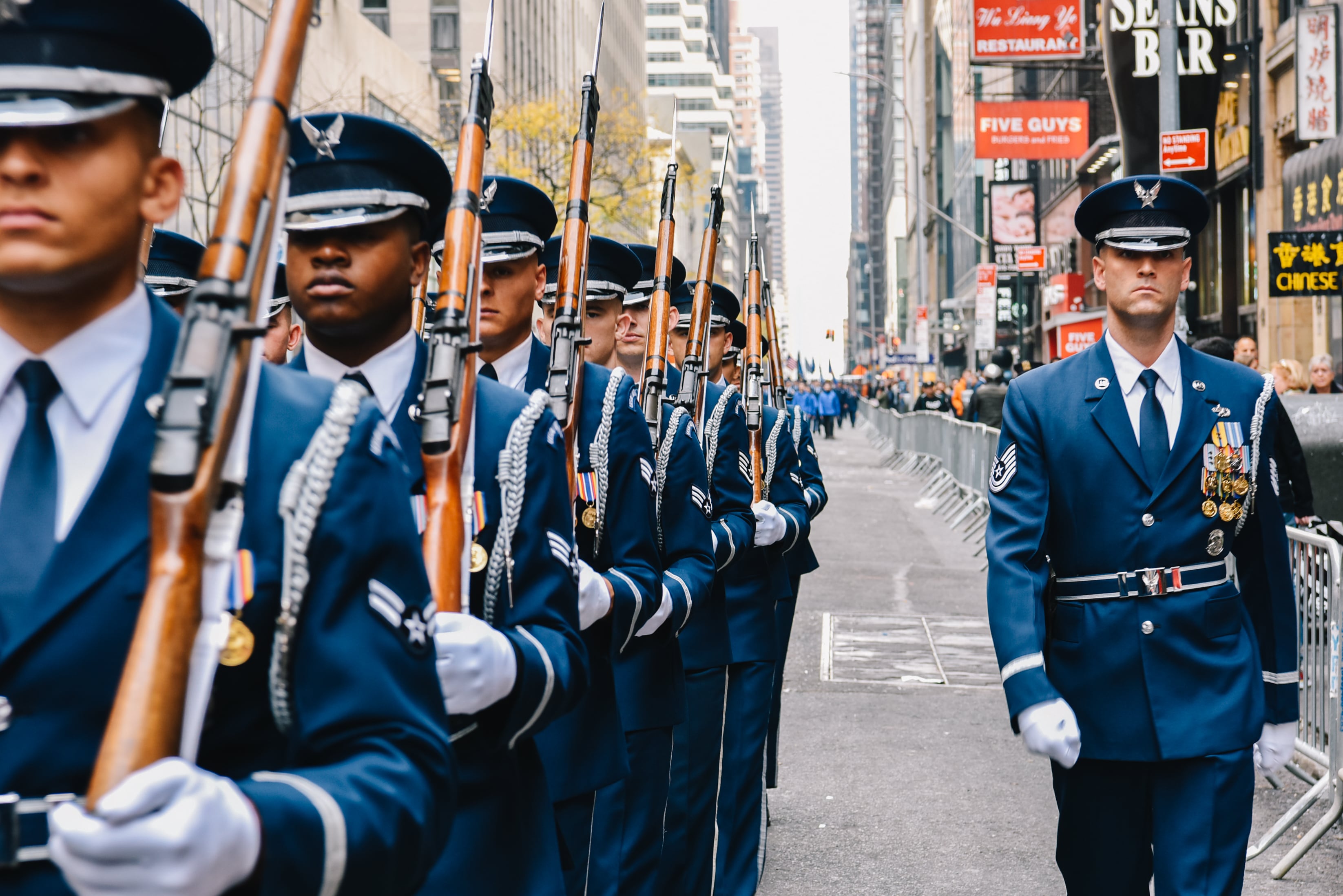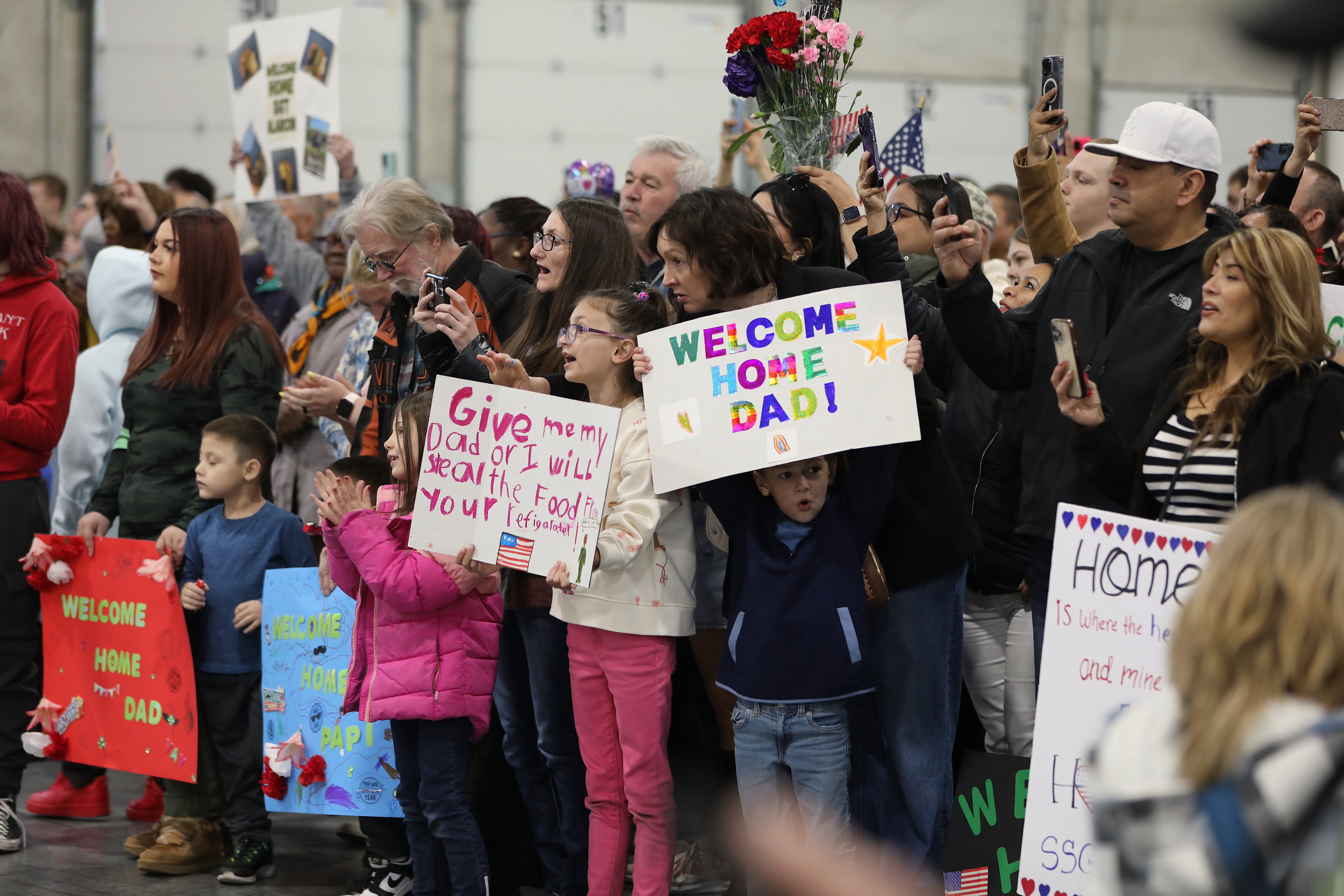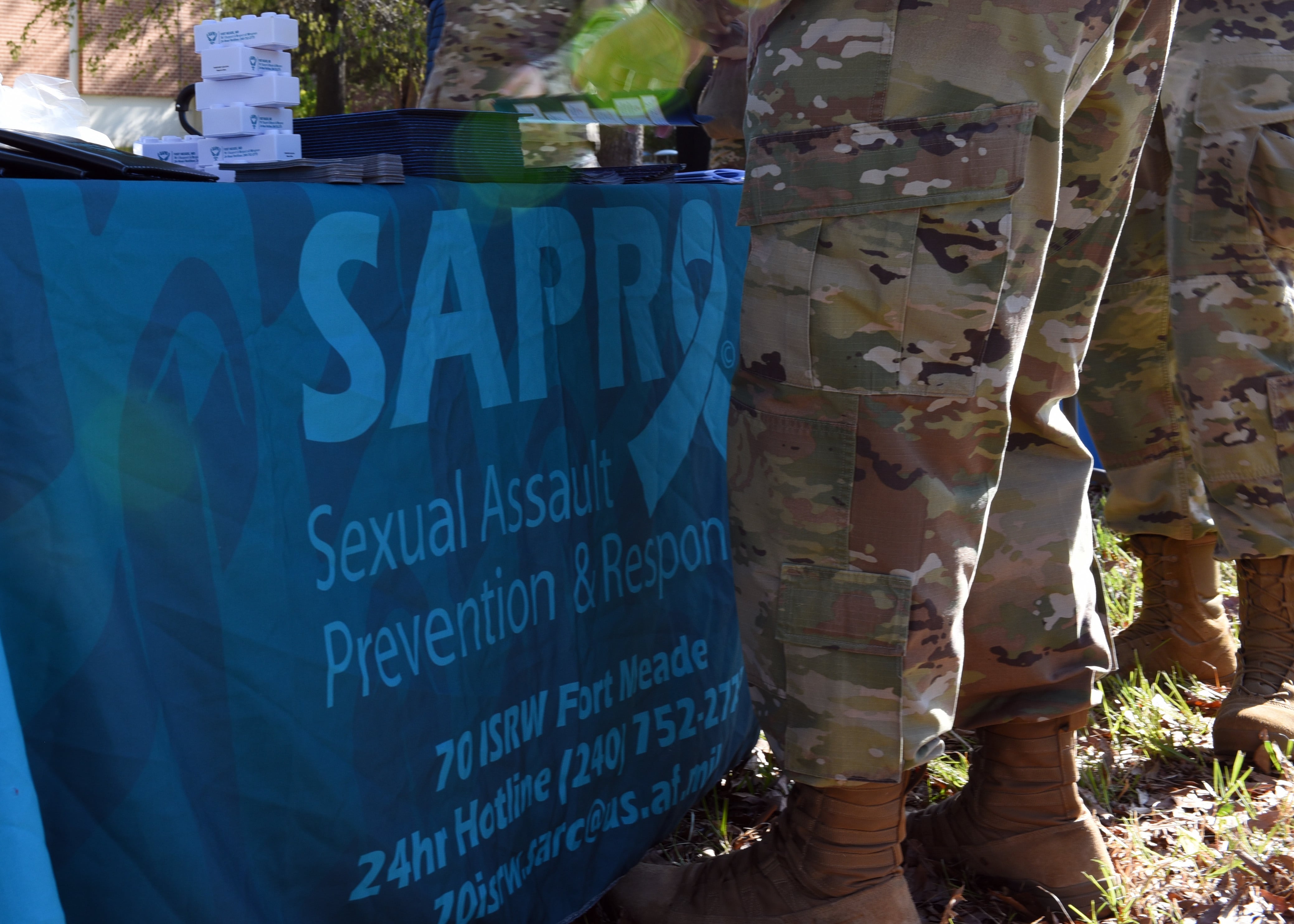If you want to know about the future of the Veterans of Foreign Wars, Marine Corps veteran John Holland will take you to a graveyard.
In south Denver’s sprawling Fairmount Cemetery, there sits a plot of some 90 gravestones arranged in neat, concentric circles around a tall pedestal where the life-sized statue of a soldier stands guard with his rifle.
"Soldier rest, thy warfare o’er, on fame’s eternal camping ground," Holland reads from the engraved stone below the statue, "their silent tents are spread, and glory guards with solemn sound, the bivouac of the dead."
A Vietnam veteran, and recent national chaplain of the VFW, he reads the words with a certain reverence. Some of his friends are buried here, or nearby in family plots. One day he might be as well.
Every weekend you’ll find him at the local VA hospital, pushing the wheelchairs of the infirm.
A few years ago he was ordained as a nondenominational pastor so he could officiate funerals.
"What I do is bury my friends and in some cases marry them," he says. So far he’s buried more than a hundred of his friends
in the gardens of stone
.
The VFW’s future is not among the dead, he says, but in the stories they tell and the lessons they impart.
If the VFW is to survive, it must learn from their history, he says. Or suffer their fate.
The cemetery monument, says Holland, was dedicated by "Camp John S. Stewart No. 1, Army of the Philippines on Aug. 13, 1911." That was the 13th anniversary of the capture of Manila by U.S. forces in the Spanish-American War.
The cemetery is Denver’s second oldest and was designed by the same German landscape architect who mapped out the state’s capitol grounds at the turn of the last century.
It was in the then-new, golden-domed home of the Colorado legislature that a small group veterans of the Spanish-American War first started to gather on Dec. 1, 1899.
They called themselves the Army of the Philippines. Soon there were posts across the West. In the East, a similar group started the Veterans of Foreign Service.
And like the Grand Army of the Republic, for Union Veterans of the Civil War, this new generation of returning war fighters banded together for the camaraderie known
only
among former brothers-in-arms — and to fight a new fight for their benefits and pensions
,
and the care of
for
those wounded
,
and
as well as the widows of those lost.
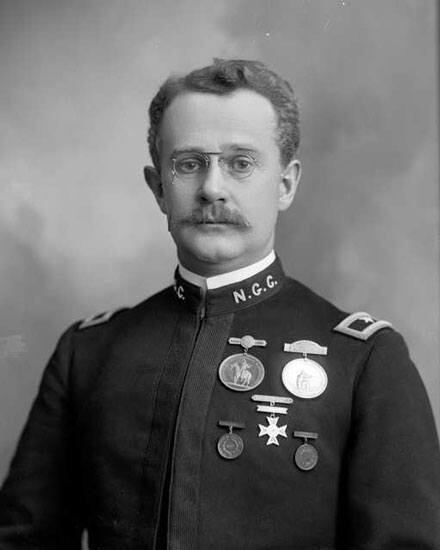
Gen. Irving Hale, who led Colorado troops during the Spanish-American War, was a founding member of Denver's Post 1 in 1899. Now buried at Fairmount Cemetery, he became one of the first leaders of the Veterans of Foreign Wars when it was created more than a decade later.
Photo Credit: Courtesy of VFW Post 1
But these veterans were also different. Unlike their Civil War counterparts, who had aged more than 30 years since Gen. Robert E. Lee signed his surrender in a small town in rural Virginia, these young veterans were from the first major conflict fought overseas.
Nearly 400,000 in all, they fought not only in the jungles of the Philippines, but also Guam and Puerto Rico, as well as Cuba, where the Battleship Maine was sunk in Havana’s harbor in a prelude to the fighting and where U.S. Marines first assaulted a small patch of beach dubbed Guantánamo Bay, and have largely remained ever since. Many of them fought again in the Philippine Insurrection that followed a year later.
They were, in short, the first veterans of foreign wars. And largely, they were not welcomed by their national war predecessors.
"The guys who’d fought in the Civil War didn’t want to have anything to do with the guys who’d gone to fight in the Spanish-American War. So, they formed their own organization,"
says
Holland says.
Not feeling welcome is something Holland remembers well.
When he got back from Vietnam, like most veterans of that war, he did not receive a hero’s welcome.
"We were not treated well," says the former air traffic controller plainly, still a hint of pain in his voice. "I had no interest in joining anything associated with the military, especially the VFW."
By 1984, however, he took a sales class that recommended joining anything that would give you a lapel pin "so it looks like someone wants you. So, I joined to get the lapel pin."
And to look like someone wanted him.
It had been 14 years since he’d returned from the war zone, but still he was not wanted or welcomed.
When he joined VFW Post 6616 in northwest Denver, it was one of the classic good-ol'-boy clubs of World War II veterans, complete with their own canteen bar, who were not interested in any fresh blood.
"The bartender, who I think was also the quartermaster at the time, always had a short stub of a cigar in his mouth,"
says
Holland says. "Every time I asked him when the next meeting was, he’d mumble something and then say, ‘Well, you just missed it.’ This group wanted the dues, but didn’t want any new members to actually come."
His was not a unique experience.
"There were people in the VFW who would see to it that when a Vietnam veteran wanted to join, they had to write a check. They’d take the check and then throw it away. That way, they could say they never got the money. I have Vietnam veteran friends who to this day will not join the VFW because of how they were treated."
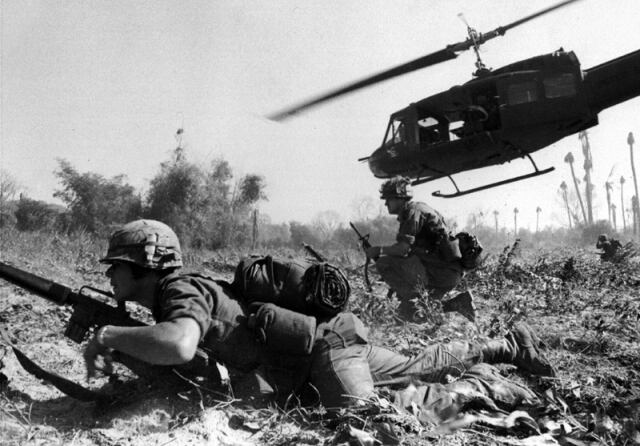
Troops coming back from the fighting in Vietnam often were not even welcome at their local VFW post.
Photo Credit: Army
But as badly as the Vietnam veterans were received by their fellow war fighters, their experience was also not unique among the generation of veterans before them.
"It is my understanding the World War I guys were not especially welcomed by the Spanish-American War guys," he says. Indeed, so unwelcome that World War I vets in turn created their own group, now called the American Legion, which initially allowed only doughboys from the ‘Great War’ among its ranks.
"And the World War II guys were not especially welcomed when it was their turn. Same for the Korean veterans. And we certainly weren’t, either."
Now a new generation is returning from war. And at VFW posts across the country, perhaps ironically, those few Vietnam vets like Holland who hung on, or joined later, are now largely in charge.
"Right now, the mindset of most of the VFW is through the eyes of the Vietnam veteran. The good news is, those of us who have been to Vietnam know we are not the future. The future is with folks like VFW Post 1, the young members."
Some do. But far from all.
Indeed,
many
post-9/11 veterans often report receiving the same cold welcome — or flat-out hostility — at posts across the country. Despite more than 2.5 million potential new members returning from 15 years of combat, VFW’s ranks have slid from highs of 2.1 million members in 1995 to fewer than 1.2 million now, down more than 100,000 from last year.
In the last 12 months alone, according to VFW officials, 70 posts across the country have closed
up completely
or consolidated with another post.
That trend is turning, says incoming national VFW Commander-in-Chief Brian Duffy, who was sworn in at the group’s annual convention on July 27.
Duffy, a former Air Force crew chief and navigator, flew cargo planes into war zones that ranged from the invasions of Panama and Grenada
invasions
in the 1980s to the 1991 Persian Gulf War to liberate Kuwait. His C-141 Starlifter was the first jet to touch down in Kuwait City as Saddam Hussein’s forces were in retreat.
"We brought in some supplies and took out some Marines that had been part of the invasion force," he says.
As the first Gulf War veteran to hold the top position at VFW, Duffy says his mission
now
is to deliver a revamped VFW for future generations while hauling away outdated mindsets still holding the organization back.
So far, VFW leaders have managed to attract only about 150,000 veterans of the Iraq and Afghanistan wars to
in Iraq and Afghanistan among
their rolls. That’s just
six
6 percent of those eligible to join from those wars.
Duffy likes to tell the story of a VFW article he read recently about "someone opining on how they couldn’t get younger veterans to join and participate in the organization."
The kicker: "That article was written in 1921. The younger veterans he was talking about were coming out of World War I," he says. "We have the same challenges now, but the solutions are different."
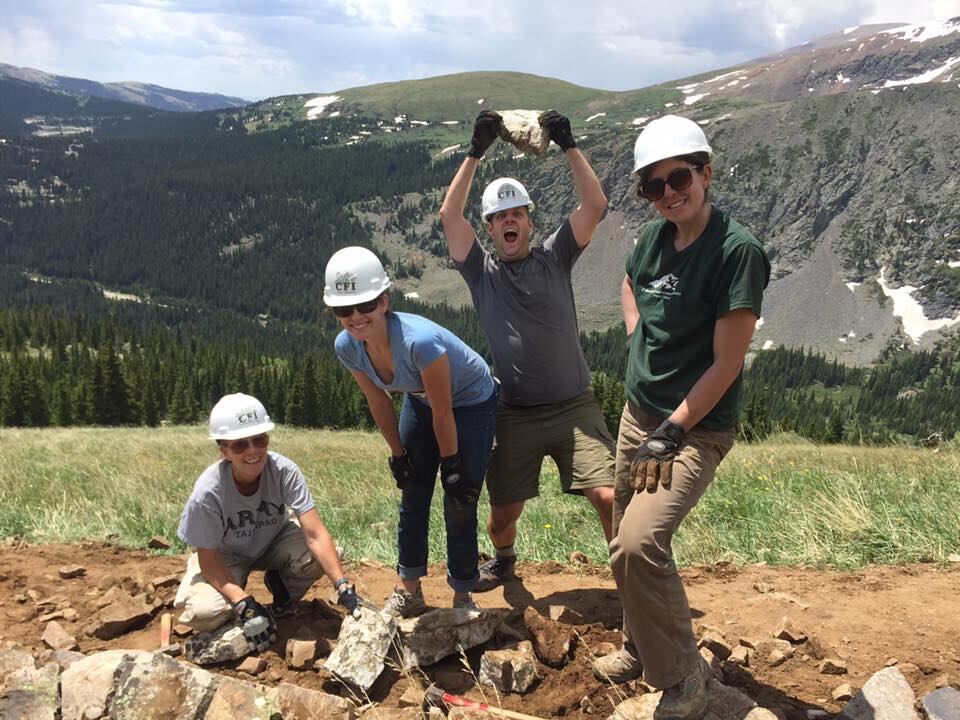
Partnering with Team Red, White and Blue and the Colorado Fourteeners Initiative, members of VFW Post 1 help with high-country trail maintenance.
Photo Credit: Courtesy of VFW Post 1
Back then, the canteen served a useful purpose for fostering
comradery
camaraderie.
"But if you offer nothing more than a bar now, that’s just sad. That’s not going to attract today’s generation of veterans. That’s why other veterans service organizations — like Team Red, White and Blue, Team Rubicon and others — have been so successful. The product that they’re offering is a much better match for what this generation is looking for."
That’s why one of his main themes this year will be simple. "Our way into the future is found in our past," he says.
"Our way into the future is found in our past."
When the founding members of what became the VFW first started meeting, he says, "they didn’t get together to form a canteen. They got together because they saw a need to help
a
fellow veterans who were in difficult situations coming back from the Spanish-American War. We are a veterans service organization — service is what we sell, service is what we were created for, and service is what is going to carry us into the future."
And while the traditional fish-fry fundraisers and handing out flags on Memorial Day can still have their place, what he means is far more of the kind of hands-on stuff Post 1 is doing.
"We need to transition more VFW posts into that thinking of being a hub for veterans services and helping fellow veterans, the military and their families, but also getting out into their communities and helping fulfill some of the very real needs out there," he says.
And more and more, Duffy says, that’s already happening.
He points to the VFW state office in Connecticut organizing a mud run
competition
for posts there.
VFW Post 76 in San Antonio
, Texas
started hosting a regular craft beer festival in recent years.
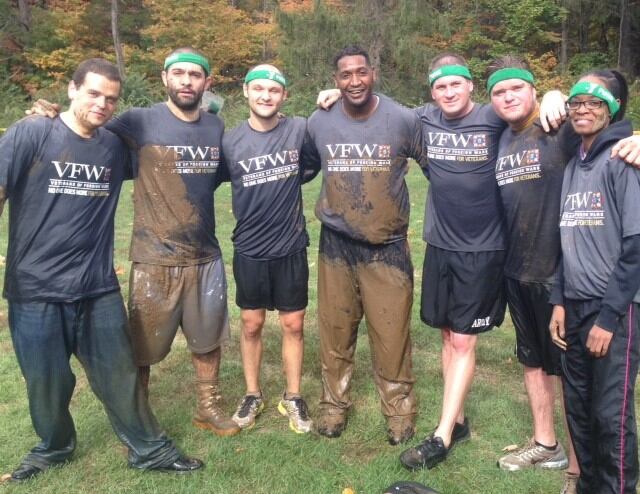
VFW leaders in Connecticut organized a mud run for post members.
Photo Credit: Courtesy of Veterans of Foreign Wars
"Another post in Rhode Island teamed up with Habitat for Humanity. It was one of the projects that the younger veterans could really wrap their heads around and get excited about, but also one that the older veterans really had some expertise and craftsmanship to share. So they were really able to enjoy that together."
To capture and encourage more of that kind of engagement, the newly revamped VFW home page tracks #VFWpostpride postings on social media.
Indeed, Duffy says, "news of our demise is greatly exaggerated."
He credits the membership decline and closing posts as an unfortunate, but not altogether unexpected consequence of the World War II, Korea — and now Vietnam — generations'
entering their
twilight.
Meanwhile, some new posts are opening, five in the past year alone.
And more are coming.
Marine veteran Max Spahn is leading the charge to start
create
a
new
VFW post at
Northwestern
Northeastern University in Boston, where he’ll be a senior this year.
The outgoing president of the Student Veterans of American chapter there, Spahn says a VFW post on campus just makes sense. "We are already heavily affiliated with Team Red, White and Blue, Iraq and Afghanistan Veterans of America, and Mission Continues, and we don’t want to see the VFW die."
He says they’re on track to recruit the necessary 35 founding members required for a new post and plan to formally charter the group
on
Sept. 11.
"They’re in an urban setting, they have a strong alumni presence who are VFW-eligible and are also part of their chartering body,"
says
Duffy says. "They just wanted to use the strength of the VFW out in the community and use the resources we have to really leverage what they’re doing and be a force multiplier for them."
Meanwhile, 17 states — as well as VFW’s overseas regions in the Pacific and Europe — have managed to increase their membership. In fact, along with Louisiana, VFW membership in areas outside of the United States is among the fastest growing.
Still, he acknowledges that reversing the overall downward trend will take time.
"I’m not worried about the VFW surviving, but I’d like to see it thrive. And I think it will, but it definitely needs to make that transition, make that turn from being just a home for social events to being a hub for services."
With an organization as big as the VFW, he says, "I can kick the rudder, but it’s going to take a while to turn the ship. But we are turning."
The first post is breaking the cycle
A year ago, Military Times embedded with VFW Post 1 for a week. The oldest post in the nation was already making a name for itself as an incubator of innovative programs geared specifically to
for
the youngest veterans.
Like
the
VFW itself, their ranks had dwindled
in recent years
. Hitting hard times, and unable to pay their bills, the few members
that were
left were forced to sell their historic building. Essentially homeless, a small cadre of younger veterans led a sort of revolution to reinvent what the VFW could be.
And their numbers began to grow.
Two years ago, they bought a rundown building in Denver’s edgy Santa Fe Drive art district. Ditching the private bar model, instead they opened a public art gallery, filled largely with the works of local veteran artists.
They offered yoga and meditation classes to veterans and their families. Monthly meetings whittled away much of the ritual and religious aspects of VFW gatherings and focused more on socializing and networking.
Meanwhile, with its modern
slick
website and
prolific
persistent social media presence, the post is realizing that vision of becoming a hub to connect
members with other local veterans groups as well
members of the veterans community.
And their its ranks have swelled.
In the year since, all that continues. And much more.
Among the developments:
- Out-of-this-world outreach. In the last 12 months, the post’s membership grew to about 1,200. Among its the post’s newest members: Navy combat veteran-turned NASA astronaut Scott Kelley, who was sworn into Post 1 while orbiting in the International Space Station. More importantly, participation in monthly meetings has more than doubled to about 120 showing up for the gatherings.
- Health and fitness focus. Partnering with the nonprofit Healing Warriors Program, Post 1 now hosts monthly free pop-up clinics for pain and management of post-traumatic stress. The free yoga classes have grown to twice a week while the post also added a tai chi program.
- Artful expansions. The veteran-run Art of War Project continues to run its art therapy programming, but has turned over management of the gallery to Post 1’s newly created Veterans’ Art Council. Partnering with local universities, cultural organizations and professional artists, the council is providing workshops, lectures and mentorships.
- Speak up. Post 1 started its own twice-monthly Toastmaster Club, a national leadership and public speaking mentoring group. On Friday nights, the post hosts free acting classes for veterans. There is also a regular writing workshop.
- Networking. VETpeer2peer, Post 1’s mentoring program, provides a venue to build connections with other veterans with a special focus on recently discharged troops and those who have relocated to the Denver area. Meanwhile, monthly poker nights and groups such as the Alpha Gamma Xi Sorority, for female U.S. veterans, are also hosted at Post 1.
"I’m probably one of their biggest fans," says Duffy. "I don’t know if we have any others that are doing things quite to the level of Post 1, but there are certainly others who are doing incredible things to emulate their youth and their vigor."
Back at the Fairmount Cemetery, the past is still watching over the future.
When the VFW lifted its ban on female veterans joining its ranks in 1977, former Army Sgt. Mona Starkey was among the first to join. She’d served in China and Burma during World War II.
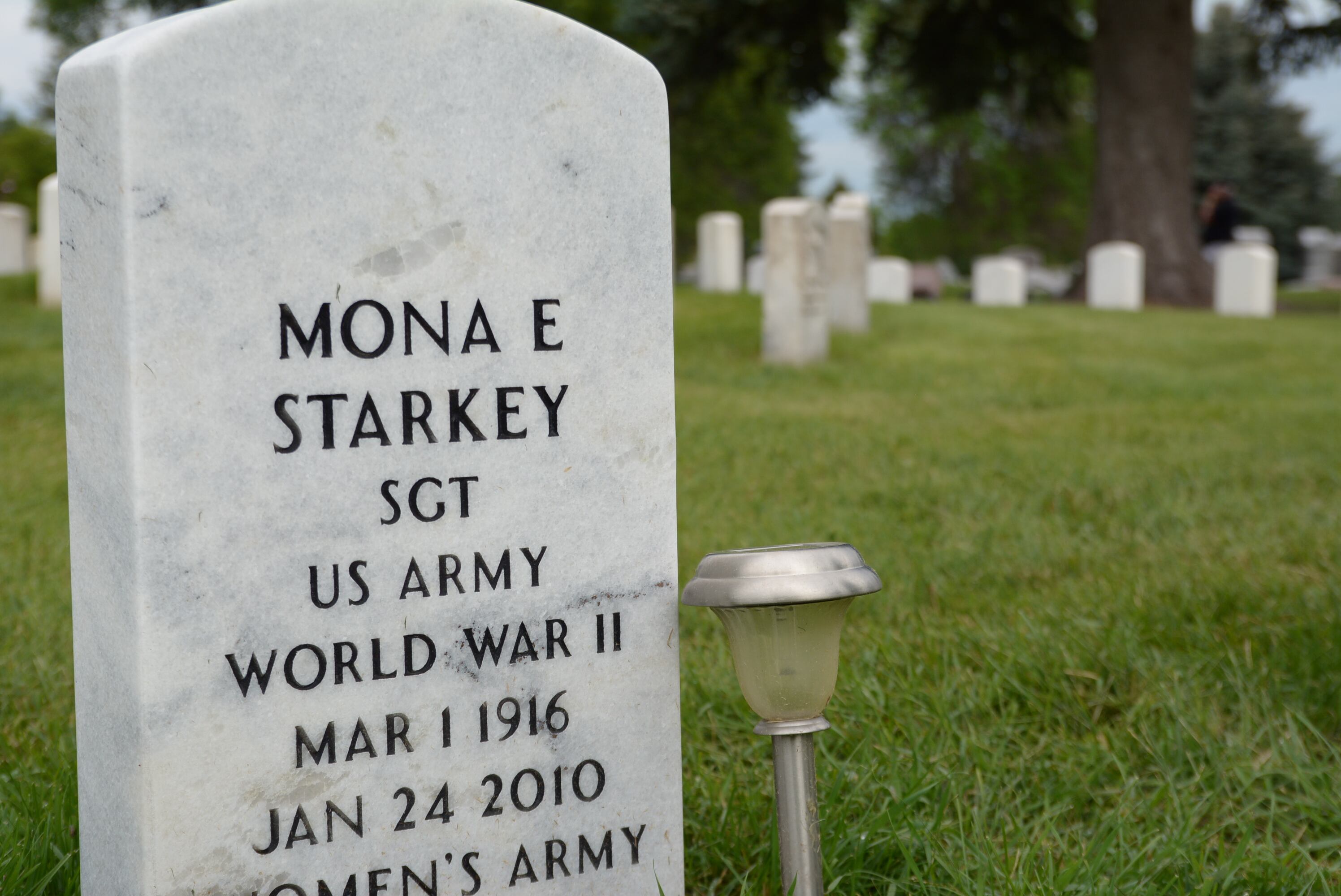
Mona Starkey was among the very fist women admitted into the VFW after it lifted its ban of female combat veterans.
Photo Credit: Jon R. Anderson/Staff
After joining the VFW, she met Ray Starkey, a Navy veteran who had also served in the Pacific, and they soon married.
Mona died in 2010. Her grave is among those looking out from the Post 1 plot at Fairmount.
On May 30, as part of a Memorial Day picnic at the cemetery, Post 1 swore in — for the 117th consecutive year — a new board of officers.
In an otherwise unremarkable rite of passage, witnessed annually at VFW gatherings across the country, Navy veteran Michael Mitchel handed over command of Post 1 to Air Force veteran John Harry.
Harry, who only joined the post three years ago, has been actively involved right from the start.
Harry left the Air Force in 2007
,
after a decade of deploying into war zones as part of a U-2 spy plane ground crew.
"I’ve always said, when I left the military I felt like I lost a big part of my family. Because in the civilian world that sense of camaraderie doesn’t exist — at least not in any job I’ve had since getting out," he says.
"Joining the VFW, I felt like I’d found that again."
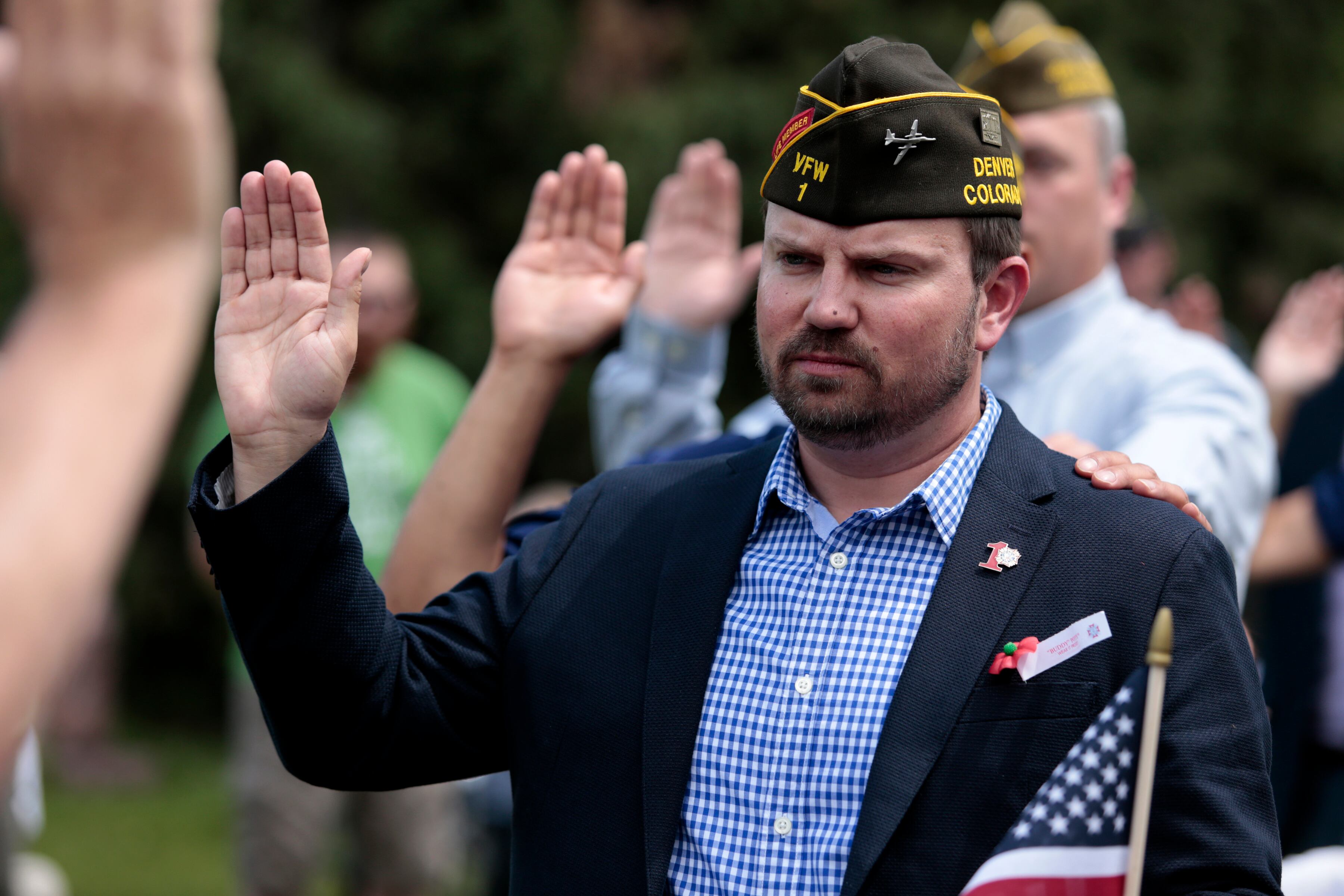
Air Force veteran John Harry takes the oath of office as the new commander of VFW Post 1 in Denver.
Photo Credit: Carl Payne
That’s all the more impressive considering it wasn’t until leaving the military that he was able to come out as a gay man. VFW’s national office isn’t sure if Harry is the first openly gay post commander.
He actually hopes he's not.
"That's a lot of pressure," he says, adding, "I don’t want that to be my defining characteristic as the post commander. That’s not why I’m doing this. I don’t want to be the gay commander."
Instead, he says, one of his
my big
priorities is building bridges with other veterans groups. "There’s almost a competitiveness right now, and I think that’s unnecessary. We all kind of have the same goals, so we should be working together even more."
When he was elected commander of Post 1, he got an email from Duffy congratulating him.
"I am a big proponent of John,"
says
Duffy says. "Not because he’s openly gay, but because he’s incredibly qualified. But would you have thought that an organization like the VFW would’ve allowed that to happen even
ten
10 years ago? So we are changing, we are evolving."
Indeed, the same year Mona Starkey died, just six years earlier, VFW’s national leadership was railing against the repeal of the ban on gays serving openly in the military.
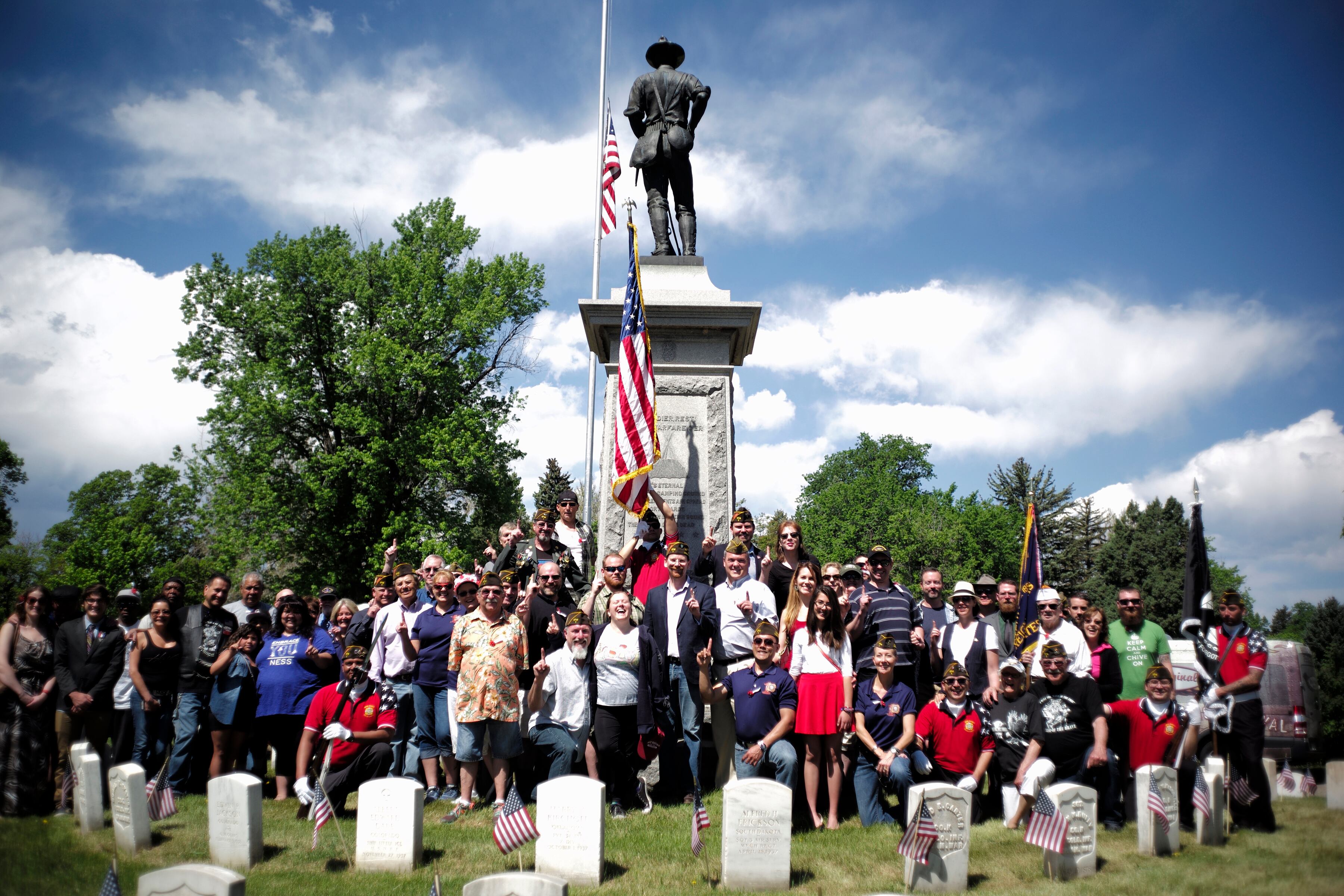
Members of VFW Post 1 gather for Memorial Day ceremonies at Fairmount Cemetery in Denver.
Photo Credit: Carl Payne
"My wife broke the ice for women," says Ray Starkey, who not only remains a member of Post 1, but has served as post chaplain continuously for the past 30 years.
Starkey says they’re "saving the spot next to Mona for me. When I go out there, we’ll be the first couple buried there together."
Starkey thinks his wife would approve of all the changes at Post 1. He thinks she would like Harry, as a person and as the new commander of Post 1. He knows he does.
"Change is good. We need the young people. You have to have new blood, you have to have change, or we’ll all just die off."



